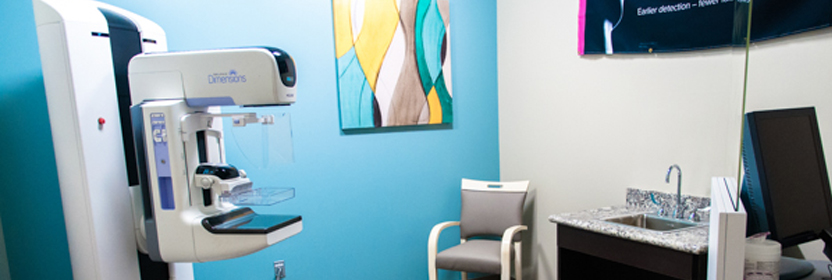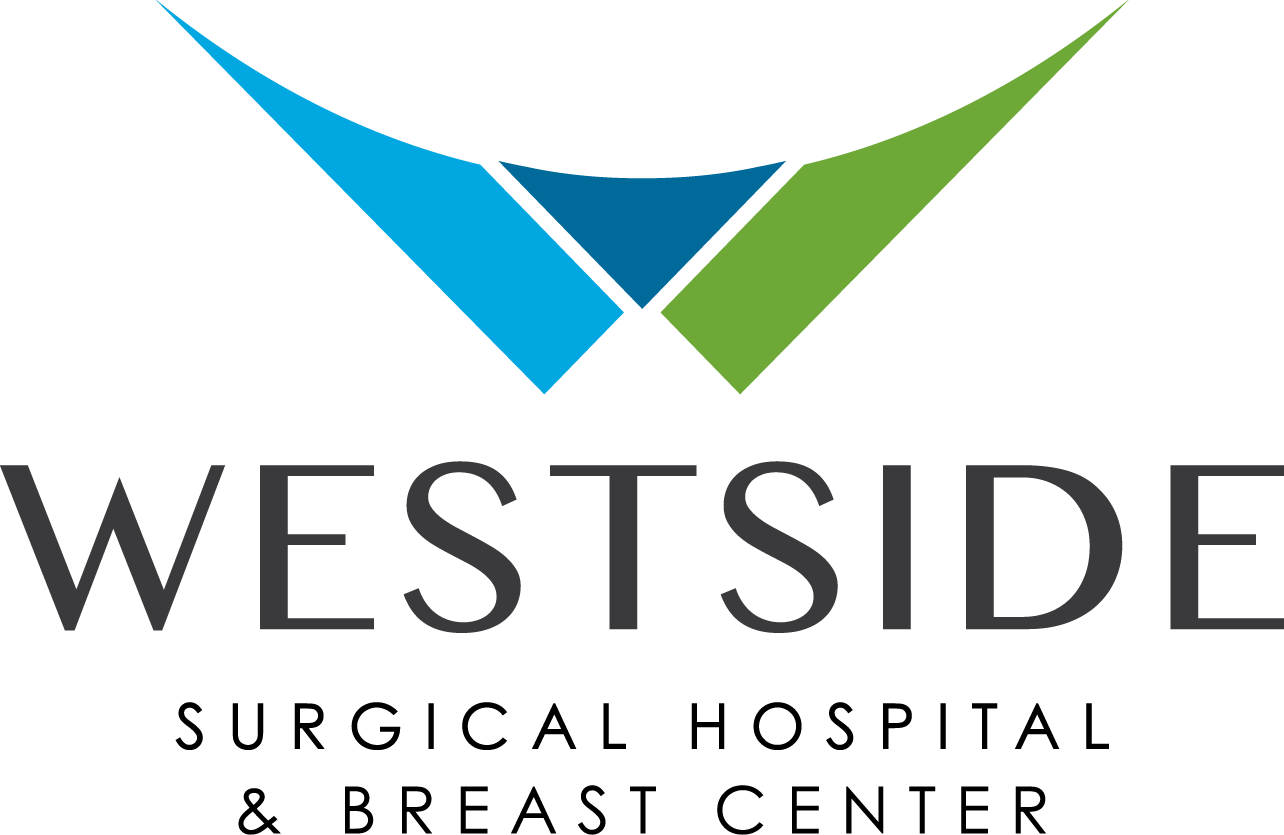Screening & Diagnostics

Westside Surgical Hospital & Breast Center has always had a special focus on breast health, and with our Breast Center we can care for women with breast cancer from diagnosis through treatment. We use state of the art microsurgical techniques and the most advanced breast-imaging technology.
Routine Screening
A mammogram is an x-ray picture of the breast. Screening mammograms are used to check for breast cancer in women who have no signs or symptoms of the disease. Diagnostic mammograms are used to check for breast cancer after a lump or other sign or symptom of the disease has been found. Besides a lump, signs of breast cancer can include breast pain, thickening of the skin of the breast, nipple discharge, or a change in breast size or shape; however, these signs may also be signs of benign conditions. A diagnostic mammogram can also be used to evaluate changes found during a screening mammogram or to view breast tissue when it is difficult to obtain a screening mammogram because of special circumstances, such as the presence of breast implants.
The National Cancer Institute recommends that women age 40 or older have screening mammograms every 1 to 2 years. Women who are at higher than average risk of breast cancer (for example, because of a family history of the disease or because they carry a known mutation in either the BRCA1 or the BRCA2 gene) should talk with their health care providers about whether to have mammograms before age 40 and how often to have them.
What is a 3D Mammography?
3D/Tomosynthesis is an important technology because it allows better visualization of dense breast tissue. This translates into earlier detection of potential abnormalities and fewer callbacks for unnecessary tests. The increased accuracy of this technology truly saves lives and makes early breast cancer detection a reality.
The three-dimensional (3D) digital mammography detects breast cancer tumors at earlier stages. “Three-D mammograms have been shown, in the right hands, to reduce false positive studies by 37 percent and increase the detection of early tumors by over 50 percent,” says Dr. Stephen Rose, director of the Breast Imaging Program.
Rose Imaging Specialists has the most experience in the use and interpretation of 3D mammography compared to any other radiology group in Texas.
As a patient you can now receive comprehensive breast and fertility care with the most advanced imaging and reconstructive surgery techniques available.
Routine Screening
A mammogram is an x-ray picture of the breast. Screening mammograms are used to check for breast cancer in women who have no signs or symptoms of the disease. Diagnostic mammograms are used to check for breast cancer after a lump or other sign or symptom of the disease has been found. Besides a lump, signs of breast cancer can include breast pain, thickening of the skin of the breast, nipple discharge, or a change in breast size or shape; however, these signs may also be signs of benign conditions. A diagnostic mammogram can also be used to evaluate changes found during a screening mammogram or to view breast tissue when it is difficult to obtain a screening mammogram because of special circumstances, such as the presence of breast implants.
The National Cancer Institute recommends that women age 40 or older have screening mammograms every 1 to 2 years. Women who are at higher than average risk of breast cancer (for example, because of a family history of the disease or because they carry a known mutation in either the BRCA1 or the BRCA2 gene) should talk with their health care providers about whether to have mammograms before age 40 and how often to have them.
Our landmark center offers:
- 3D Screening Mammograms
- Diagnostic Mammograms
- 3D Breast Ultrasounds
- Bone Density Testing
- Stereotactic Breast Biopsies
- Breast Care and Risk Prevention Education
- Nurse Navigation


